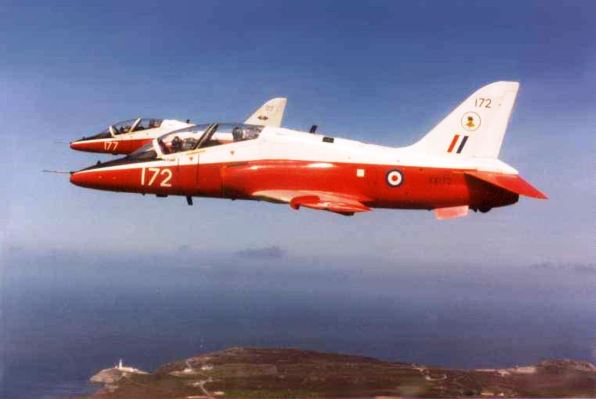Reviewed by Dave Coward
Our thanks to Revell Germany for the review sample: www.revell.de 

Background info…
The BAE Systems Hawk is a British single engine, advanced jet trainer aircraft. It first flew in 1974 as the Hawker Siddeley Hawk. The Hawk is used by the Royal Air Force, and other air forces, as either a trainer or a low-cost combat aircraft. The Hawk is still in production with over 900 Hawks sold to 18 customers around the world.
In 1964 the Royal Air Force specified a requirement (Air Staff Target (AST) 362) for a new fast jet trainer to replace the Folland Gnat. The SEPECAT Jaguar was originally intended for this role, but it was soon realised that it would be too complex an aircraft for fast jet training and only a small number of two-seat versions were purchased. Accordingly, in 1968, Hawker Siddeley Aviation (HSA) began studies for a simpler aircraft, initially as special project (SP) 117. This project was funded by the company as a private venture, in anticipation of possible RAF interest. The design was conceived of as having tandem seating and a combat capability in addition to training, as it was felt the latter would improve export sales potential. Through 1969 the project was first renamed P.1182, then HS.1182. By the end of the year HSA had submitted a proposal to the Ministry of Defence based on the design concept, and in early 1970 the RAF issued Air Staff Target (AST) 397 which formalised the requirement for new trainers of this type. The RAF selected the HS.1182 for their requirement on 1 October 1971 and the principal contract, for 175 aircraft, was signed in March 1972.
Renamed “Hawk” following an employee naming competition the aircraft first flew on 21 August 1974. In 1977 Hawker Siddeley merged with other British aircraft companies to form the nationalised British Aerospace (BAe), which subsequently became BAE Systems upon merger with Marconi Electronic Systems in 1999.
The Hawk is a tandem two-seat aircraft and has a low-mounted cantilever monoplane wing and is powered by a non-augmented turbofan engine. The low-positioned one-piece wing was designed to allow a wide landing gear track and to enable easier maintenance access. The wing is fitted with wide-span, double-slotted, trailing-edge flaps for low-speed performance. Integral to the wing is 836 litre (184 imp gal) fuel tank and room for the retractable main landing gear legs. Designed to take a +8/-4 g load, the original requirement was for two stores hardpoints but it was designed to fit four hardpoints by Hawker Siddeley.
The fuselage design was led by the need to get a height differential between the two tandem cockpits, this enabled increased visibility for the instructor in the rear seat. Each cockpit is fitted with a Martin-Baker Mk 10B zero-zero rocket assisted ejection seat. The centre fuselage has an 823 litre (181 Imp Gal) flexible fuel tank. The two-shaft turbofan Rolls-Royce Turbomeca Adour engine is fitted in the rear-fuselage with inlets on each side above the forward wing roots. A ram air turbine is fitted just in front of the single fin as well as a gas turbine auxiliary power unit above the engine. The forward retracting nose landing gear leg is fitted in the nose.